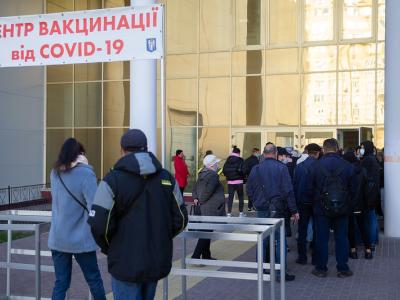May 30, 2002 (CIDRAP News) The United States' food supply makes an attractive target for terrorists, and people in the food industry need to talk more frankly about the risks, bioterrorism expert Michael T. Osterholm, PhD, MPH, said in a Minneapolis speech yesterday.
"We have to sit down and talk about our vulnerabilities," Osterholm told about 50 public health and food industry professionals gathered for a series of courses on food safety and biosecurity presented by the University of Minnesota School of Public Health. Osterholm was the keynote speaker for the school's 2002 Public Health Institute, called "From Farm to Table: Safety and Biosecurity in Food Production Systems."
The food production and distribution system is a likely target for terrorists because it offers an efficient vehicle for delivering biological or chemical weapons and because an attack could have a huge economic and psychological impact, said Osterholm, who is director of the university's Center for Infectious Disease Research and Policy (CIDRAP), producer of this Web site.
"Food, because of the way it's produced and distributed, makes a very efficient system for delivering a weapon," he said. Foodborne disease remains an important problem in the United States, with millions of cases each year, he noted, adding, "If we were so darned good at biosecurity, we wouldnt be having this happen." Given this vulnerability, "You could perpetrate something [a biological attack] today and know you've got a good model working for you."
Regarding the possible economic and psychological effects of an attack, Osterholm said, "If you could call into question a large part of the food supply, the implications would be huge." And an attack that affected a particular food commodity could create "a long-term and potentially semipermanent lack of confidence in that commodity."
He sprinkled possible examples of terrorist attacks on the food system through his talk. "The bad guys know that if a small amount of bot [botulinum] toxin in a tanker of unpasteurized milk could very well cause thousands of people to die of botulism. Pasteurization wouldn't be a deterrent in that situation." Also, he said, "Releasing foot-and-mouth disease isn't difficult at all." Foot-and-mouth disease, a highly contagious livestock disease, caused major damage to the British beef industry in 2001.
Osterholm also said drinking water systems are vulnerable to attack, though not so much to biological or chemical weapons as to explosives. Chlorination would stop most germs, and it would take large amounts of chemical agents to poison a whole water system, but a truck bomb could knock out a water-treatment plant or an aqueduct and deprive a city of water for weeks, he said.
In the next 5 years, Osterholm predicted, "We will have one, two, I don't know how many major biosecurity events."
He spoke of a lack of leadership in the food safety realm: "I don't think anybody's in charge, frankly." A few years ago the federal government launched an effort to develop "information sharing and analysis centers," or ISACs, to protect critical sectors of the nation's industrial infrastructure, such as transportation and the electric power system, from sabotage and other hazards. But when that was done, the food industry was left out, he said. He noted that CIDRAP has been working to promote the creation of a food-industry ISAC.
Osterholm suggested that the food industry can learn from the safety systems and procedures used in aviation and in US veterans' hospitals. Pilots can report errors to the Federal Aviation Administration without fear of being penalized, and the information is used to help other pilots avoid errors. The Department of Veterans Affairs medical system adopted a similar model, in which staff members can report errors and problems without being identified or penalized, and the information is used to improve systems and training.
"In the world of biosecurity, we've got to adopt much the same kind of system," Osterholm said. "We need to have a different culture. . . . We need to help people understand it's in their best interest to share what they know and how they know it."
In response to a question, he said that HACCP (hazard analysis/critical control point) plans pose a dilemma when it comes to protecting the food supply. (HACCP plans spell out procedures for identifying points in food processing where contamination can occur and for taking preventive steps.) HACCP plans are designed to prevent natural hazards, not deliberate contamination, Osterholm noted. If an HACCP plan fell into the wrong hands, it could provide a "blueprint for disaster," he said. But if food companies don't share their HACCP plans, it will be difficult to figure out how to build antiterrorism safeguards into them. "I don't see a great deal of discussion on these questions now," he said.
In other comments, Osterholm said the nation needs more people trained in disciplines related to food safety. It's good that the Food and Drug Administration (FDA) is adding 650 jobs related to food security, but most of those jobs will be filled by people already working in food safety, not by newly trained people, he said. "So in a way we're just shuffling chairs around on the Titanic."
When he was asked if the country is any better prepared for public health threats now than it was before Sep 11, Osterholm said, "I would say parts of the system are responding." For example, the Department of Health and Human Services started notifying states of their shares of new public health funds only about 20 days after a $1 billion supplemental appropriation was signed by the president last January. Other positive signs include the new biodefense bill that was passed by Congress last week and the rapid buildup of the stockpile of smallpox vaccine, which is expected to be sufficient for the entire population by the end of this year.
But he added, "I don't see a great improvement on the food side with FDA and USDA [US Department of Agriculture]."


















